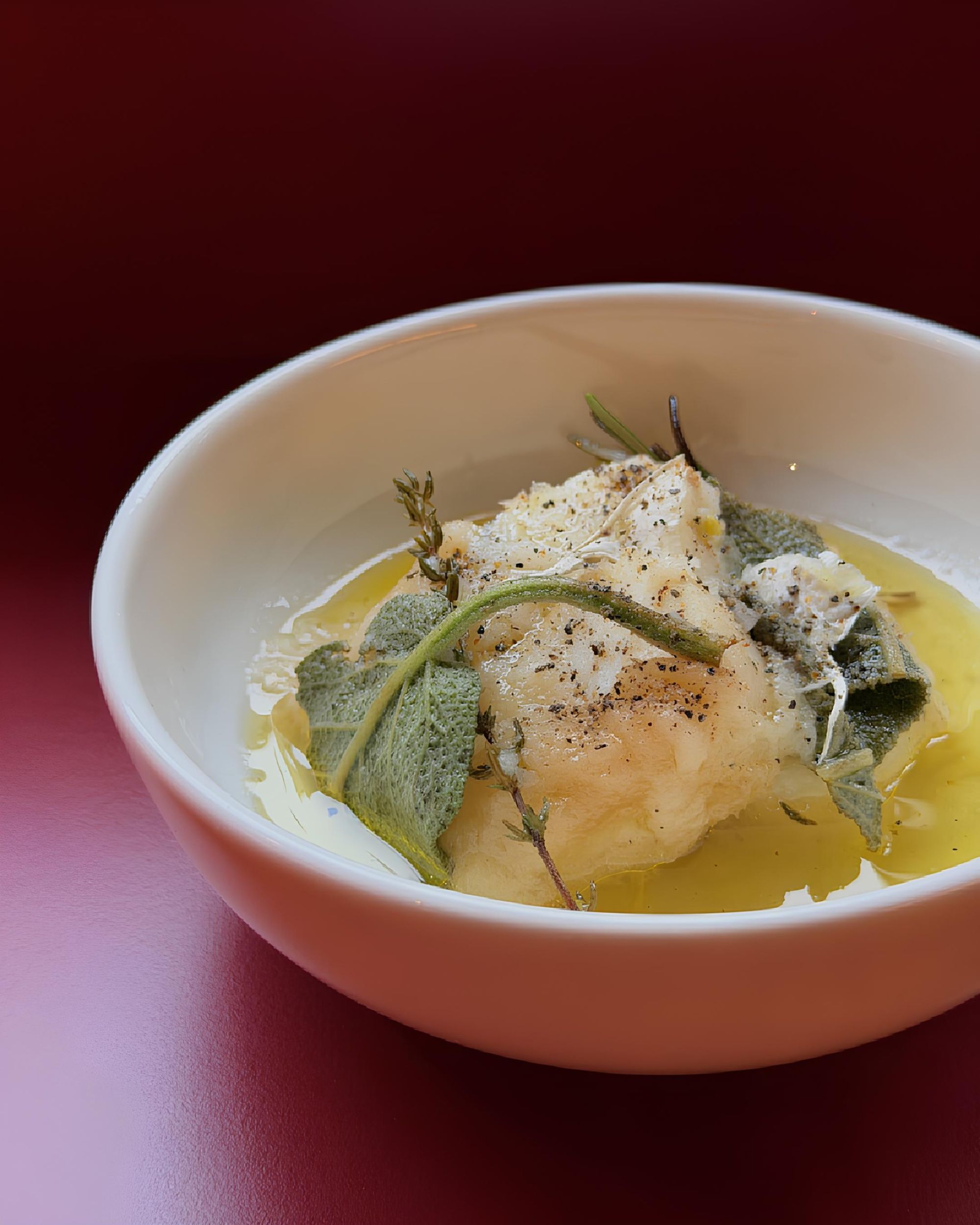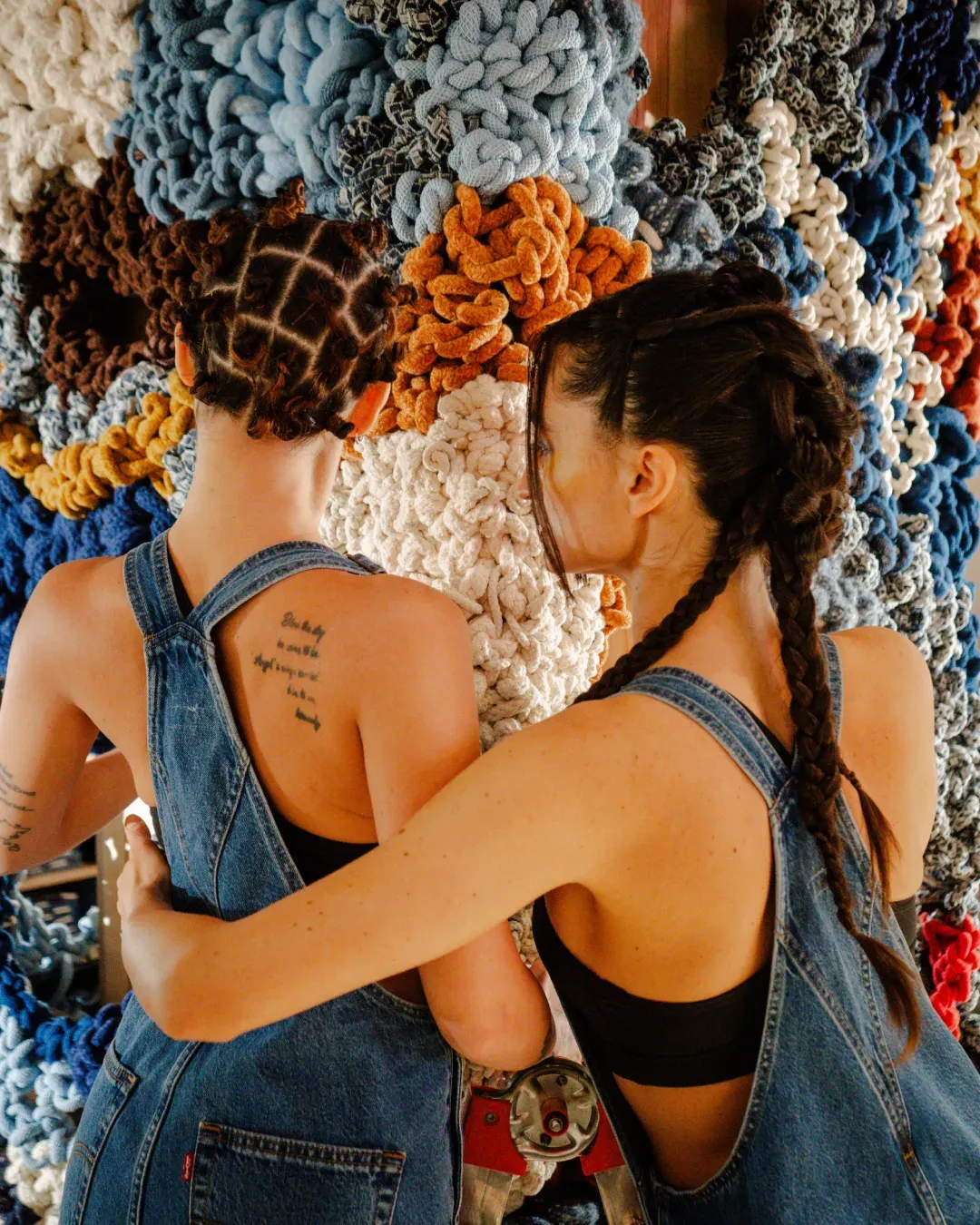
The love affair between fashion brands and the bars of Milan The emergence from the culture of out-of-towners
Participating in the Milanese lifestyle also means getting to know and frequent its historic businesses. Whether it's pastry shops, bars, delicatessens, or trattorias, knowing the historic and well-frequented addresses attests to a secure belonging to the category of bon vivants that is the cross and delight of Milanese urban mythology. Over time, places like Giannasi's chicken, Faravelli's preserves, Torrital and Bar Basso's Negronis, and the pastries of Cova, Cucchi, Marchesi have become synonymous with refined taste and pillars of Milanese pop culture, reflecting the city's most flattering self-representation. In recent years, the fashion world has seen these bars as an interesting opportunity for collaborations, a trend that emerged in New York during the pandemic, where wearing restaurant and bar merch became a signal of belonging to an initiated community. The latest example is the MSGM capsule dedicated to Pasticceria Gattullo, a historic location for aperitifs and outdoor lunches in the Bocconi area, continuing a trend that began with the collaboration with Cucchi last year. Around the same time, there was a collaboration between The Attico and Sant Ambroeus, another stronghold of the Milanese elite, and last spring, the collaboration between Highsnobiety and Bar Basso.
If MSGM and The Attico are two well-established brands of the "Milano fuorisede" (Milan away from home), linked to the mythicizing narrative of the city but not truly belonging to it like Prada. Their hyper-local collaborations coincide historically with the advent of a generation of Millennial creatives who have chosen Milan as their ideal base, and the collaboration between Highsnobiety and Bar Basso signals a next step. After collaborating during Milan Design Week, Highsnobiety "exported" the Bar Basso format to Berlin for the local fashion week, complete with merch and attached Negronis, almost recontextualizing it as a brand in its own right. Something similar happened with Giannasi, which, even before the hyper-local collaboration with Carhartt WIP, produced and sold its own merch (alongside its delicious roast chickens) in the form of hoodies, t-shirts, and even a branded water bottle. The recent collaboration between MSGM and Gattullo, qualifying as the second in a series after the initial collaboration with Cucchi, truly represents the realization of a trend that goes beyond the collective musings of the post-lockdown and tells the story of how the Milanese fashion industrial and media complex has begun to capitalize on its myths: from the popularization of the "sciura" concept to the success of meme accounts like @fecondazionemilano, and also the renewed media attention (and antipathy) that the city has received since 2021, as well as the aforementioned collaborations.
Io vivendo la mia sciura milanese fantasy, brunch con vista pic.twitter.com/DCNcjqHf1L
— Matteo (@Mttprs_) December 19, 2021
Considering that these collaborations are absolutely delightful and emerge as inside jokes, they are the most visible symptom of a growing synergy between Milan as a city and cultural hub and fashion companies: Tod’s restructuring the municipality, Zegna landscaping the flower beds in Piazza Duomo, Ferragamo restoring and reopening the Archbishop's Seminary of Porta Venezia now known as Portrait Milano, Gucci signing the tree in Galleria and the lights in the suburbs, Prada collaborating on the recovery of Scalo Porta Romana. The membrane that separates fashion brands and state and private institutions is becoming increasingly permeable, involving entities of all sizes, from the municipal administration to the neighborhood bar beloved by high society. And while all these initiatives are virtuous and work well within what is defined as the "bubble" of the city (which includes not only fashion but everyone who adheres to a certain lifestyle and narrative), they reveal a level of self-referentiality due to the city, with its role as a centralized corporate and cultural hub of fashion, being the main place where trends in behavior are born and consolidated. But the more this role grows in the collective imagination, the more other centers in Italy are deprived of it: which clouds both the fashion culture in more manufacturing-oriented regions, such as Veneto, and the sartorial tradition of cities like Rome, Florence, and Naples. A mythology that also seduces leaders in the creative world: during his visit to Milan, Hiroshi Fujiwara dedicated posts on Instagram to both the Latteria di Via San Marco and Pasticceria Marchesi.
Another layer of interpretation concerns a "transversal" sense of exclusivity that partly relates to the brand one wears, partly to the places one frequents, and partly to one's residential location in the city - and achieving a beneficial one of these in these times is often a real challenge. In short, only those who live within the ring road and perhaps only in Porta Romana will appreciate that Giannasi's name has ended up on a Carhartt WIP t-shirt; just as only those who frequent South Milan will grasp the meaning behind MSGM's collaborations and will enjoy wearing them. Their goal, beyond the immediate self-ironic meme moment, seems to be to create belonging within a certain cultural community that certainly does not correspond to a social class or income bracket but presumes at least a prestigious residential situation and a desire for continuity with the aristocratic Milan represented by these historic names and their own démodé luxury. Added to this is the fact that these historic locations represent a form of traditional "slow life" in a city that largely lives on the shoulders of its past, and where work and life rhythms make its inhabitants "ugly," a term that denotes the blunt manners and demands of the Milanese who live by the motto Work, earn, pay, demand.
But precisely these collaborations, as well as announcements on the news regarding the high rents of the city, or crime levels, and so on, underline an importance attributed to the city that is entirely arbitrary. A triumphant, romantic, and aestheticizing narrative that also leads those who live in the city to harbor resentment towards it: resentment that often has its roots in economic, environmental, and administrative issues but emerges primarily on the cultural and public debate level. This, in some cases, also concerns restaurants: the news that Latteria di Via San Marco had refused to reserve a table for Madonna made national headlines. All these places are surrounded by a strong aspirational aura, representing the historic strongholds of "Milanesità" that the ranks of those living away from home, seeking roots and approval, would like to appropriate - knowing how difficult it is for many to establish a life in the city. Therefore, it is easy to understand how the sense of importance surrounding a certain restaurant that the city community is fond of is inflated with additional prestige and recognition when seen through the somewhat nostalgic eyes of a foreign traveler like Hiroshi Fujiwara, mentioned earlier, who, by frequenting the city, feels in essence part of its cultural ecosystem. But probably Fujiwara knows Latteria for his frequent work visits to the city - so is Latteria special in itself, or is it special because it is located in a city constantly in the spotlight?
If it were only about bars and pastry shops, why are there no collaborations with Florian in Venice, with Babington’s in Rome, or Gilli in Florence? Is it because those cities do not witness the intersection of creatives, companies, and historic bars, or because those cities lack the suitable culture for the birth of these collaborations? This would require fashion to realize that there are other cities in Italy besides Milan. They are not less mythical places, they are not less rich in history, and yet they are not located in cities directly associated with luxury clothing. It is necessary to assume that the sense of collaboration (without detracting from the capsules, which, let's repeat, are beautiful projects for real or acquired Milanese) concerns more the perceived and promoted image of the city, which in recent months has unfortunately cracked but has not given up its self-referentiality.














































